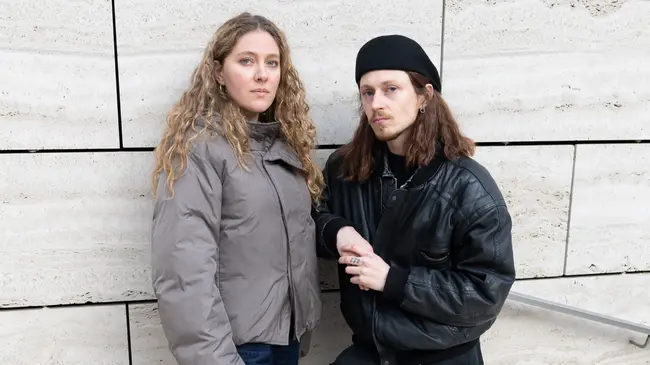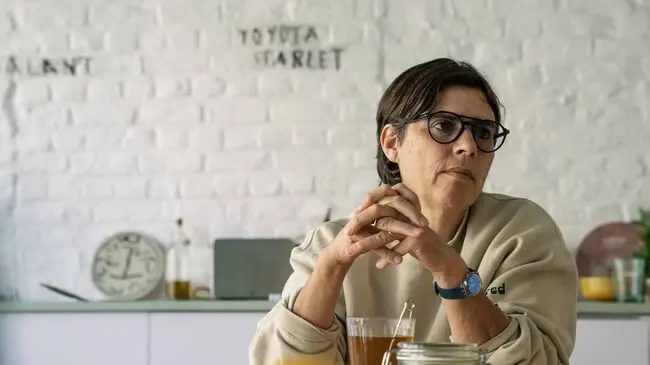Reflecting light and blurring boundaries with gemstones

During their DIVA residency in Antwerp, Mara Balode and Lingjie Wang both explore diamond history as part of their research. While Mara is inspired by the history of diamond cuts, Lingjie combines Western and Eastern gemstone histories. They are presenting their work at DIVA from 24 June to 29 June and will hold a DIVA talk on 23 June.
What are you working on during this residency?
Mara: I started with library research and I ended up finding that the ideal diamond cut would be a very interesting starting point for my project. In the early 20th century, Marcel Tolkowsky worked out the exact proportions and the angles for the round diamond cut to create the best way for the light to go through the stone so they could achieve the maximum brilliance that you can see nowadays. What’s interesting about this ideal shape is that the table – the flat part on top of the gemstone – has changed size over the past century. For example, the table size of the American cut, a predecessor of the Modern Ideal brilliant-cut, takes up between 60% to 70%. In the ideal diamond cut, the table takes up between 59% and 62% of the upper surface. I’ve used this as a starting point to create two-dimensional shapes in which I divide all the different geometric surfaces into separate sections. I can then use those to create three-dimensional objects. Those can change again when they’re held or when they become jewellery.


Lingjie: My first research focus is on the diamond encountering the jade. Diamond is a very traditional gemstone in Western cultures – its primary role is to be shiny, but it also represents something very hard. Jade has been common in Chinese culture for thousands of years. Both can be preserved for a very long time, and both represent permanence. I want to find cultural connections between these two stones, but I am also looking into the material boundaries of both and looking for a blurred area outside those boundaries. That’s something I would like to play with.
I want to find cultural connections between diamond and jade
Secondly, I’m focusing on settings and the way people process material in different settings. Diamonds are cut to be shiny, but jade is usually sculpted into specific forms, often shapes that bring good luck or animals. I think the way people treat these materials can show how people think about the material itself.


What interests you about boundaries?
L: Sometimes some people won’t notice a boundary, but people with a different background will. I could use my artworks to remind people about boundaries, to break boundaries, or to let the boundaries just be. I used to work as an industrial designer, which is about solving problems. As a jewellery designer, I need to find a problem, to explore the problems in the world. I like to get different perspectives on the same object. In that way, I feel like I also break my own boundaries.
I like to get different perspectives on the same object


Is there anything else you’re focusing on during your research?
M: I am currently learning anodisation, which is a process of creating an oxide layer on aluminium in an electrolyte bath that protects the metal from further oxidisation. You can embed colours into this layer and permanently colour the aluminium pieces after sealing them.
Light is a very important theme in my work, and these anodised pieces will reflect the light in different ways when I create diamond-based shapes with them. I’m from Latvia, so when I was younger we had very cold and dark winters. I’ve always counted the days to survive the winter and arrive in spring and summer. Light is also colour, and I love colour. Light is everything in the end. I try to capture that.
Light is a very important theme in my work

L: I’ve been doing some experiments combining precious gemstones with things that are common in our daily lives, like soda cans or toothbrushes. The treatment or context of a gemstone is often seen as something supporting the stone, where the gemstone plays the primary role and the setting the secondary role. I want to find some creative settings that break or blur the boundary between the setting and the stone.


You both have a background in jewellery design. Is it important to you that the results of this residency can be worn?
L: I hope my pieces will show my experiment and ideas, but if I have pieces that can have interactions with the body, they can be jewellery too. But they can also be objects that just stay on the table.
M: In general for me, it’s important that they can be worn. It’s very hard to place my pieces in a gallery space because if they don’t have access to light and are standing in the same spot, it’s just not possible to see my idea. It’s much better when they are in movement and being worn.
It’s much better when my pieces are in movement and being worn
I have been experimenting with size in my work as well, gradually going to a bigger scale doing different experiments and using different materials. This way I question how we perceive objects, where the boundary is between wearability and when it becomes independent, or whether a large-scale model will still relate to the body.
Different Class works with the interest of their community at heart.
Our work’s purpose is to foster a solid network for independent artists, those who love them, and those who want to support them. Become a member to contribute to the local Belgian art scene.





